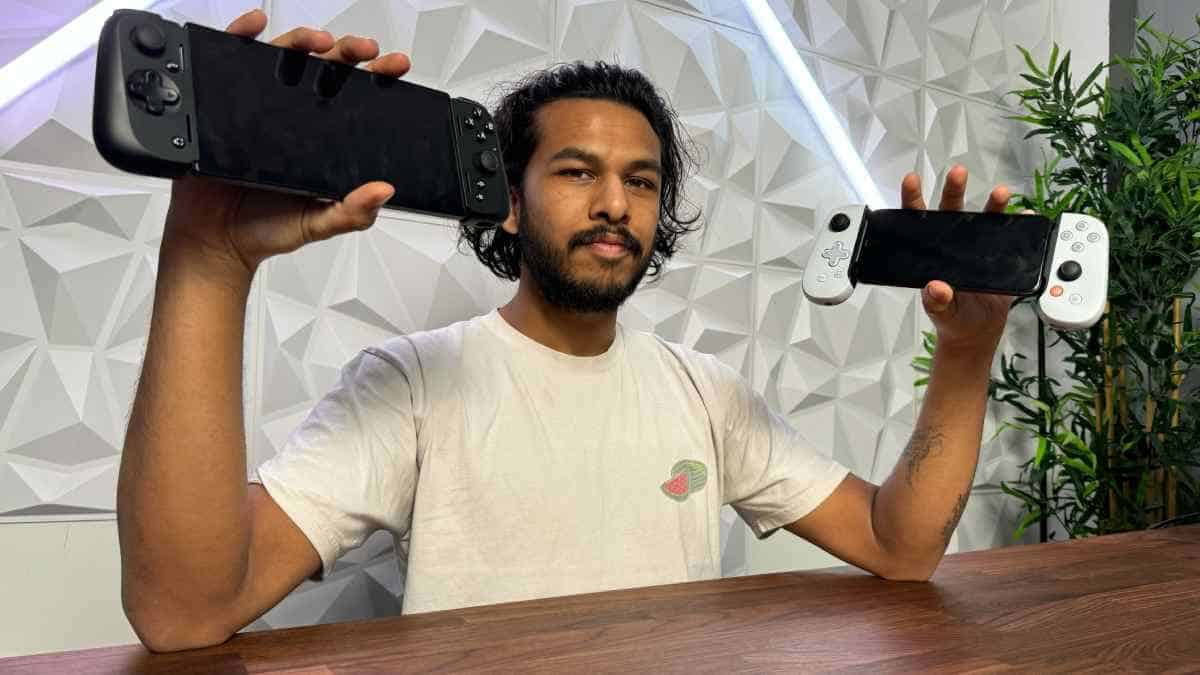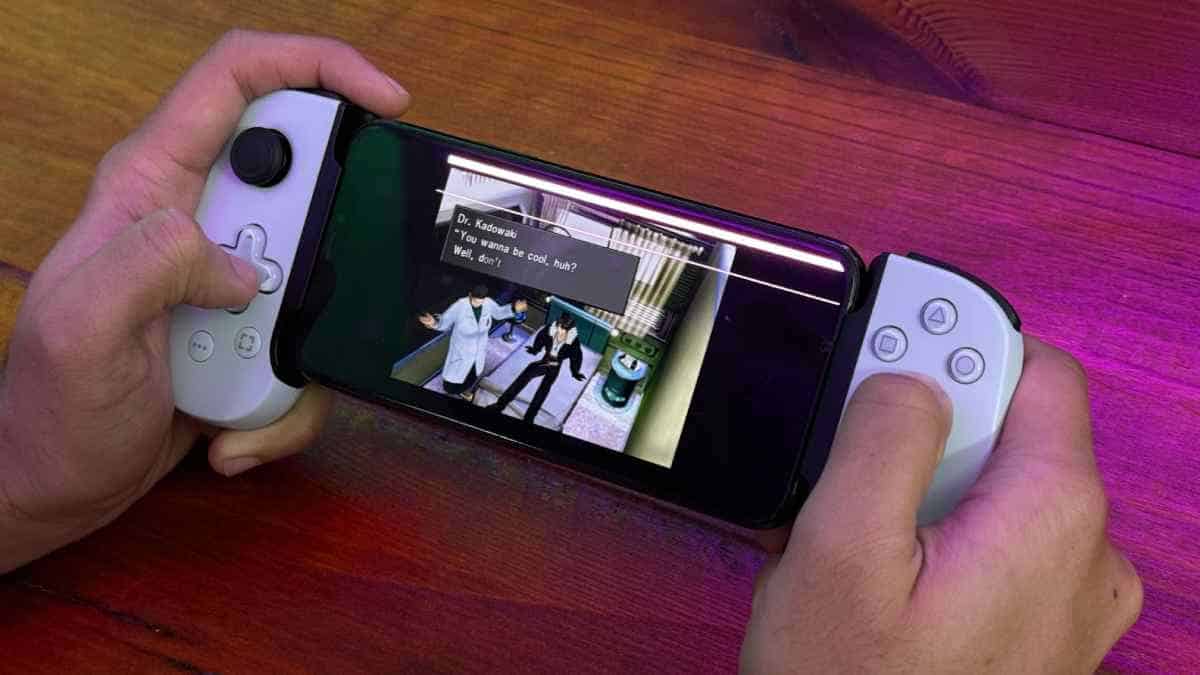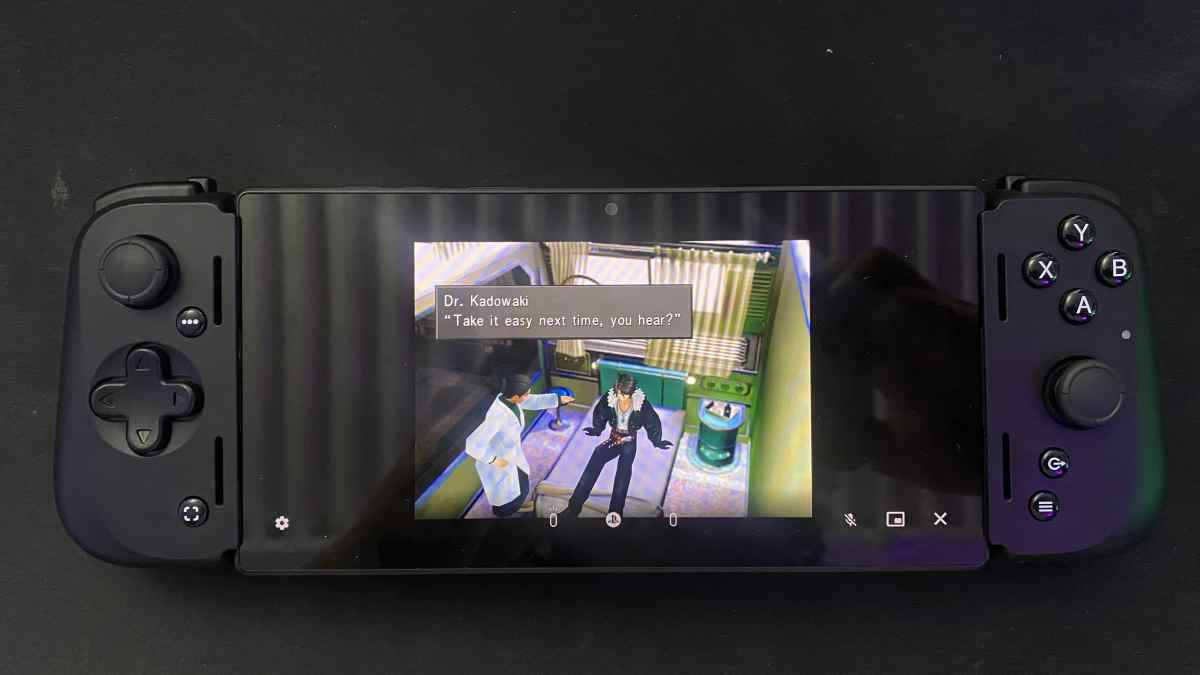Video Gamer is reader-supported. When you buy through links on our site, we may earn an affiliate commission. Prices subject to change. Learn more
The PlayStation Portal is a hard console to get a hold of. Stock is resoundingly low across many retailers and scalpers are hiking its price up unfairly. You probably already know what the handheld is by now – a PS5 controller with a built-in screen in the middle. All it does is stream your console’s gameplay to the display between your hands. That can’t be hard at all to replicate, right?
PlayStation has been a champion of remote play for years. In fact, the PSP and PS3 were both capable of this all the way back in 2006. Clearly the concept doesn’t require demanding hardware to get going, and with the absolute powerhouse smartphones that most people have today – it looks like it’s only going to be easier.
My first port of call was heading on over to the App Store on my iPhone and downloading PS Remote Play. It’s a free app from PlayStation that lets you stream your console to your phone. Set-up was incredibly straightforward. Sign-in, then link your PS5. Done. You’re in. You’ve just made your very own PlayStation Portal.
Admittedly, playing densely populated console games using touch-screen controls is abhorrent. Most, if not all, of the screen will be covered by holographic controls. When you go to press anything, your finger will cover the rest. It doesn’t help that half my phone screen is broken, either. The PlayStation Portal’s solution is to chuck some pretty good controls on the side – so we’re going to follow suit.
You might have heard of the Backbone One. It’s been around for quite some time now. Released in 2020, the company is financially backed by MrBeast and Ashton Kutcher, among others. It’s a little slide-out controller with a port for your smartphone to connect to. It’s incredibly similar to the Razer Kishi and its successor the V2.

Let’s begin with the Backbone One. This is one the cheapest options you have for creating a bootleg PlayStation Portal. After plugging my phone in, I had to download the official app. After a little more set-up and I was basically good to go. I ran the PS Remote Play app and quickly began playing the Metal Gear Solid Master Collection from my PS5. We recommend checking our PlayStation Portal stock tracker for regular updates.
However – as expected – it didn’t all run that well. The resolution, while it should have been running at 1080p, was incredibly fuzzy at first. There’s also an ever-so-slight delay between the console and my phone. This is going to be an issue with all remote play devices, but with the PS Remote App, it wasn’t at all disruptive. Playing the game wasn’t a perfect experience to begin with – but it was a workable solution. It was a little choppy at times, and connection issues often sent the resolution down a dark path, but that’s less the fault of the devices themselves and more likely an overcrowded office environment.

In the end, the Backbone One actually offered up a great gameplay experience. I tried out the Final Fantasy VIII Remastered and Marvel’s Spider-Man 2. Both games played surprisingly well, though my personal opinion leans more towards the idea that this solution will work better for people playing older, less reaction-based games.
Next, I tried out the Razer Edge. This device is a bit more strange. It’s not quite a tablet but it’s also not quite a phone. It does, however, have a beautiful AMOLED display that’s going to have your PS5 games looking even better than the PlayStation Portal’s LCD screen. The Razer Edge is bundled with the Razer Kishi V2 (a massive upgrade over the original). This is a controller virtually identical to the Backbone One, though there’s one small issue; the fact the controller’s not recognized by the Remote Play app.
There’s a solution, though. An app called PSPlay which is currently available on the Google Play Store. It’s a paid product, mind, but it circumvents many of the compatibility restrictions placed on the official app. The Razer Kishi is going to work with this app, letting you turn it into a PlayStation Portal with an even better display.

Performance on the Razer Edge was virtually identical to the Backbone One making use of my iPhone 11 Pro. The major difference was that the Edge had a much bigger display, alongside much brighter. Those with later iPhone models and Android devices will likely have screens just as big, bright and fast as the Edge’s though.
The whole time that I was testing out these PlayStation Portal alternatives, I was trying to find something that the Portal could do that my versions couldn’t. Unfortunately, there’s just no standout feature that makes it stand out from the crowd. Stuttering and latency issues aren’t isolated to a single device, instead it’s a symptom of remote streaming in general. With that in mind, it’s quite hard to judge any of them based on this.
The Razer Edge’s display shines above the rest, while the Backbone One has a great compact form factor and device compatibility. It’s hard to see why anyone would choose the PlayStation Portal over any of these. Especially when you consider that the Razer Edge gives you all the compatibility and gaming accessibility of Android, while the Backbone One encompasses iOS too.
Your smartphone is going to be capable of running a plethora of different remote streaming apps: Nvidia GeForce NOW, Xbox Cloud Streaming, PS Remote Play, alongside a bunch of other games you’re going to be able to run directly from your phone. The remote streaming handheld market is a strange one. To me, it seems as though the best way for developers to get the most out of it is to incorporate streaming features, while also giving the hardware plenty of other options too.
The PlayStation Portal focuses on just doing remote streaming well. This isn’t something I can really get behind, especially when there’s so many handheld game consoles out there that offer much, much more.
